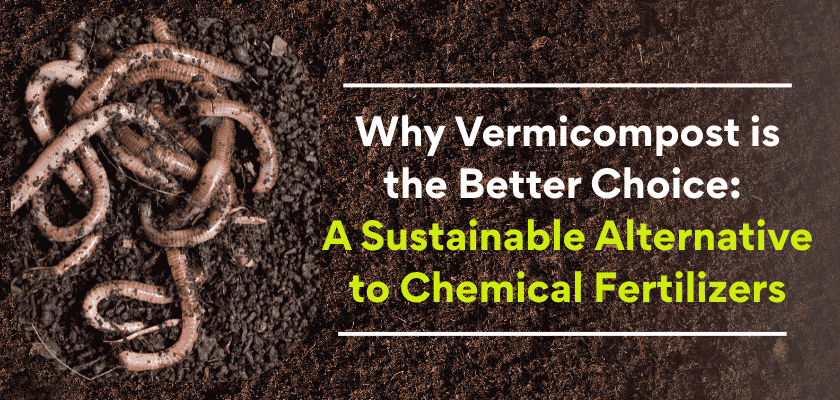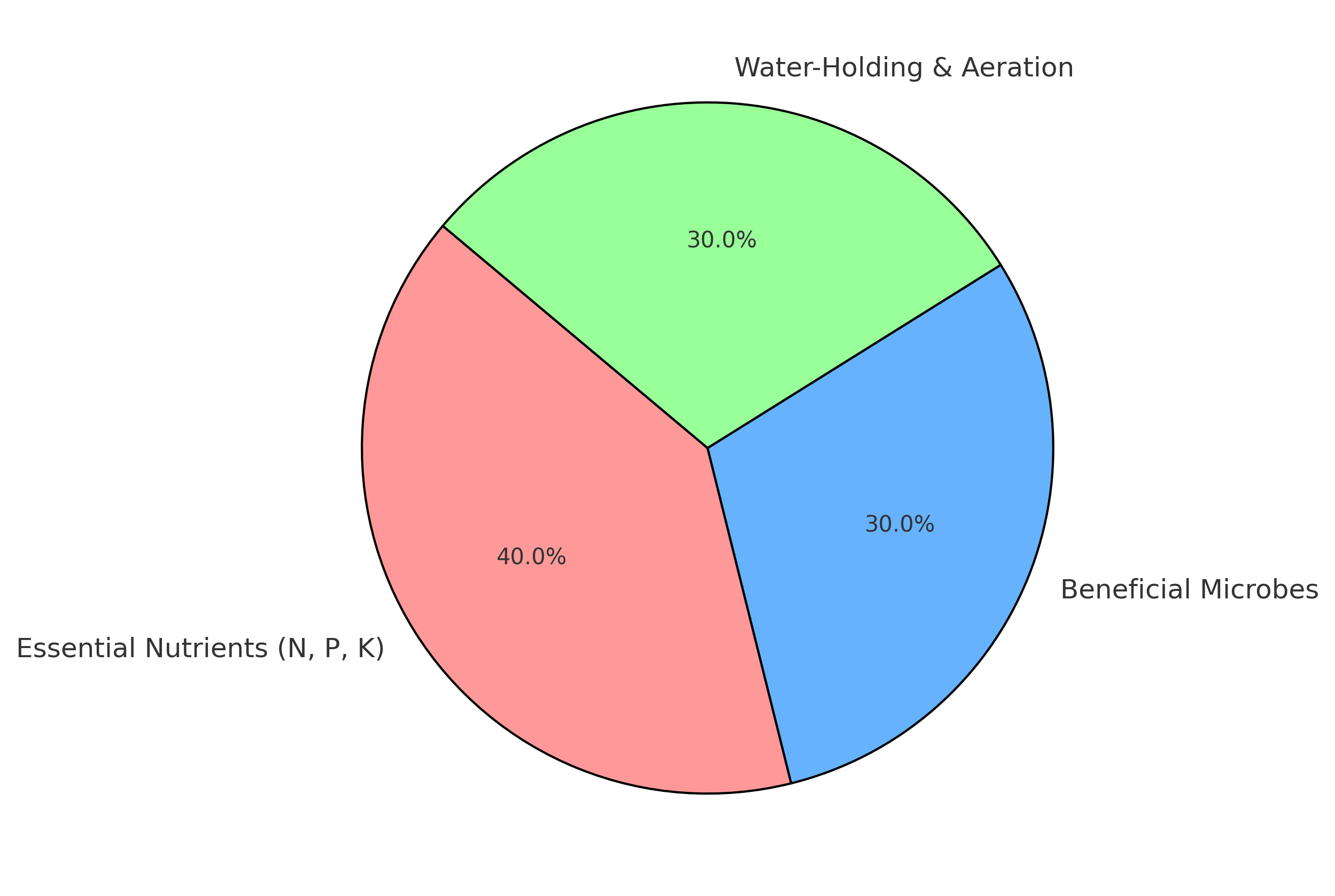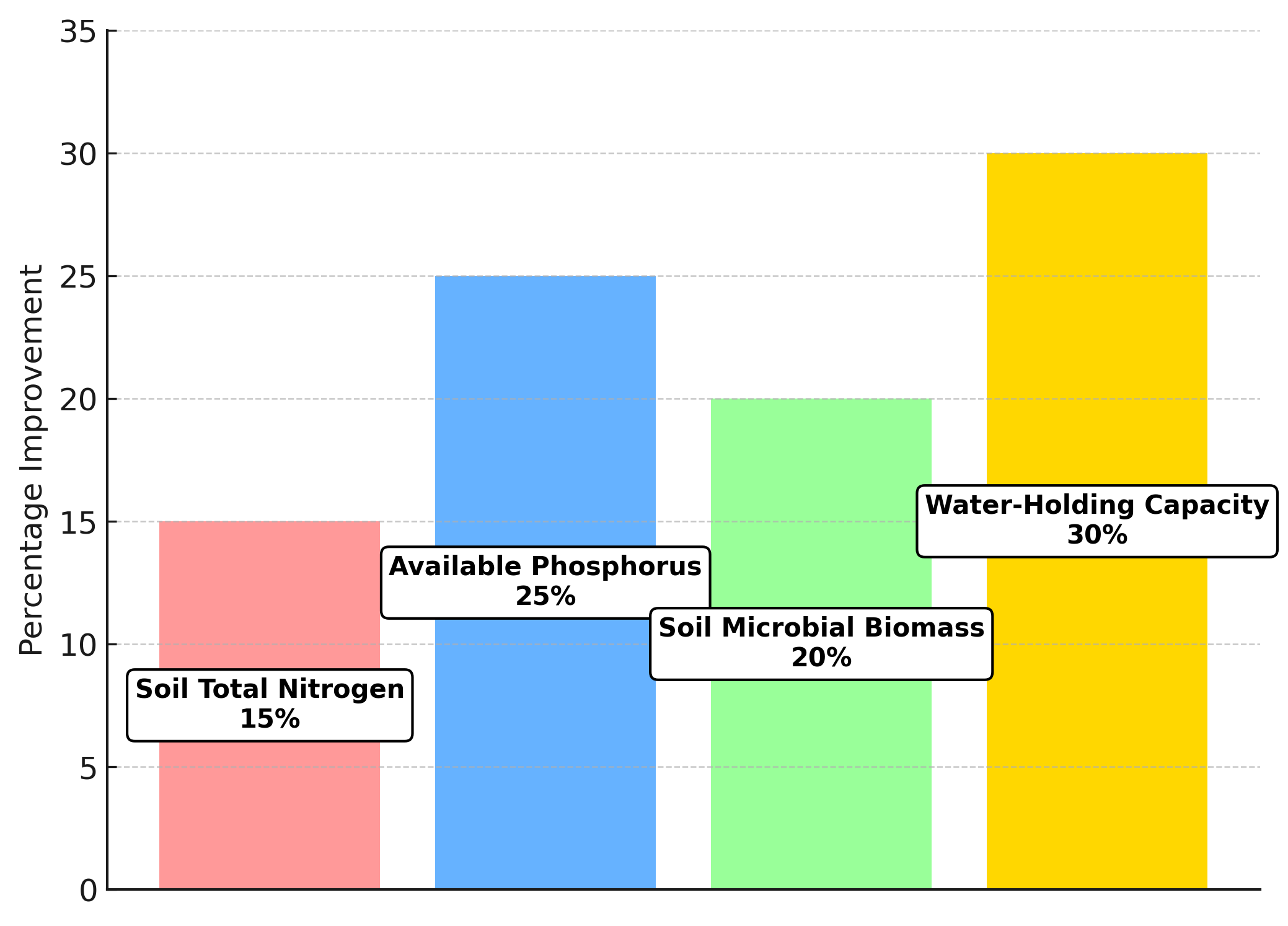
Introduction
Vermicompost is a nutrient-rich organic fertilizer created by earthworms digesting organic materials. This process, known as vermicomposting, involves breaking down kitchen scraps, yard waste, and other biodegradable materials into a dark, crumbly substance. Vermicompost contains beneficial microorganisms and essential nutrients, such as nitrogen, phosphorus, and potassium, which promote plant growth and enhance soil quality. Its natural origins improve soil structure, increase water retention, and support healthy microbial activity, making vermicompost a vital component for sustainable gardening and farming practices.
Chemical fertilizers are synthetically produced products that supply essential nutrients to plants. They typically contain concentrated forms of primary nutrients such as nitrogen, phosphorus, potassium, secondary nutrients, and micronutrients. These fertilisers are designed to make nutrients immediately available, which rapidly promotes plant growth. However, their production often relies on non-renewable resources and can raise environmental concerns. Chemical fertilizer use can result in issues such as soil degradation, water pollution, and runoff disruptions that disrupt local ecosystems.
Composition of Vermicompost:

Why Vermicompost is Better Than Chemical Fertilizers
| Factor | Vermicompost | Chemical Fertilizers |
| Soil Health | Enhances soil texture, water retention, and organic matter | May degrade soil structure over time |
| Eco-Friendliness | 100% natural, non-polluting | Contributes to soil and water pollution |
| Long-Term Fertility | Enriches microbial life, improving soil health sustainably | Provides a temporary nutrient boost, leading to soil depletion |
| Cost-Effectiveness | Can be produced using farm waste, reducing costs | Expensive and requires repeated application |
| Yield Sustainability | Ensures consistent and long-term productivity | Overuse leads to diminishing returns |
Drawbacks of Chemical Fertilizers
1. Soil Degradation: Continuous and excessive use of chemical fertilizers depletes essential organic matter, leading to soil compaction, reduced microbial diversity, and a decline in overall soil fertility. Over time, this results in lower water retention capacity and reduced natural nutrient cycling, making the soil less productive.
2. Nutrient Imbalance: Chemical fertilizers often contain high concentrations of specific nutrients like nitrogen, phosphorus, and potassium (NPK), but they lack micronutrients essential for plant growth. This imbalance can cause nutrient depletion in the soil, leading to deficiencies that affect crop yield and quality.
3. Water Pollution: Excessive application of fertilizers leads to nutrient runoff, where surplus nitrogen and phosphorus leach into nearby water bodies. This contamination contributes to eutrophication, resulting in harmful algal blooms that deplete oxygen levels, disrupt aquatic ecosystems, and harm marine life. Groundwater contamination with nitrates also poses severe health risks when consumed by humans.
4. Health Risks: Chemical residues left in crops due to excessive fertilizer use can pose significant health hazards to consumers. Prolonged exposure to nitrates and other chemicals has been linked to diseases such as cancer, methemoglobinemia (blue baby syndrome), and endocrine disruption, raising concerns over food safety and public health.
5. Soil Acidification and Salinity: The prolonged use of synthetic fertilizers, especially those containing ammonium-based compounds, can lower soil pH, making it more acidic and less suitable for plant growth. Similarly, the buildup of salts from chemical fertilizers can increase soil salinity, reducing water absorption by plant roots and negatively impacting crop productivity.
6. Loss of Beneficial Microorganisms: The continuous use of chemical fertilizers disrupts the natural microbial ecosystem in the soil. Beneficial bacteria and fungi that contribute to soil fertility, nitrogen fixation, and organic matter decomposition are significantly reduced, leading to soil degradation and lower biological activity.
7. High Cost and Economic Burden: The prices of chemical fertilizers fluctuate due to global supply chain disruptions, increased demand, and rising production costs. Farmers, especially small-scale ones, face financial strain as they become reliant on expensive artificial inputs to maintain productivity.
8. Soil Dependency and Reduced Natural Resilience: Over time, continuous use of chemical fertilizers makes soil dependent on artificial inputs. The natural fertility of the land decreases, and farmers are forced to apply larger quantities of fertilizers to achieve the same yield, creating an unsustainable cycle of dependency.
9. Greenhouse Gas Emissions: The production, transportation, and application of chemical fertilizers contribute significantly to greenhouse gas emissions. Fertilizers, particularly nitrogen-based ones, release nitrous oxide (N₂O), a potent greenhouse gas that contributes to climate change and global warming.
10. Reduced Long-Term Sustainability: While chemical fertilizers may enhance short-term crop yields, their long-term impact on soil health, water resources, biodiversity, and environmental sustainability raises concerns about their continued use. Sustainable alternatives like organic fertilizers, vermicompost, and integrated nutrient management (INM) are gaining importance to balance productivity with ecological well-being.
What Research Says
Research has demonstrated that Vermicompost significantly enhances soil health through various improvements in key soil health indicators with the application of vermicompost. The following bar graph illustrates the percentage improvements.

Making The Switch: How to Transition from chemical fertilizers to vermicompost
Transitioning from chemical fertilizers to vermicompost promotes sustainability and enhances soil health.
Start by gradually reducing chemical fertilizer use to minimize plant shock and create a more natural soil environment. This approach allows you to monitor plant responses and determine the best timing for the switch.
To use vermicompost, obtain quality compost produced by earthworms. You can create a worm bin at home or purchase one from reputable suppliers, composting kitchen scraps like fruit and vegetable peels. This not only produces nutrient-rich vermicompost but also supports organic waste recycling.
Incorporate harvested vermicompost into your gardening by top-dressing or mixing it into potting soil at a rate of 10-20%. This ratio maintains soil structure while providing essential nutrients. Adding vermicompost to planting holes can further boost root development and plant vitality.
Educate yourself and other gardeners on the benefits of vermicompost over synthetic alternatives. Adopting such sustainable gardening practices leads to improved soil health, increased biodiversity, and a lower environmental impact, contributing to the broader movement towards sustainable agriculture.
Conclusion: Which Choice Stands Out?
Vermicompost is an excellent option for farmers seeking a sustainable way to improve soil health without sacrificing productivity. While chemical fertilizers can produce quick results, they can also lead to long-term negative effects on soil fertility and the environment.
Integrated Nutrient Management (INM) is a beneficial approach, which combines vermicompost with small amounts of chemical fertilizers. This practice not only boosts yields but also preserves soil health for future generations.
By promoting organic and regenerative agricultural methods, we can create a more resilient, productive, and environmentally friendly agricultural future—one where productivity and environmental health go hand in hand.
References
- From the ground up: Why soil health is key to One Health solutions
- Vermicompost significantly affects plant growth: A meta-analysis
- The use of vermicompost in organic farming: overview, effects on soil fertility and plant growth
- Vermicomposting—Facts, Benefits and Knowledge Gaps



